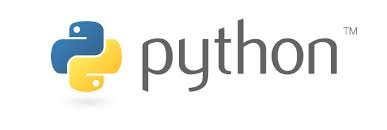Home • Programming • Python
Getting started Python
 What is Python?
Python is a clear and powerful object-oriented programming language, comparable to Perl, Ruby, Scheme, or Java.
What is Python?
Python is a clear and powerful object-oriented programming language, comparable to Perl, Ruby, Scheme, or Java.
- It has been around for over 20years
- Dynamically typed, object-oriented language
- Influenced by ABC, ALGOL 68, C, C++, Dylan, Haskell, Icon, Java,[10] Lisp, Modula-3, Perl
- Runs on Win, Linux/Unix, Mac, OS/2 etc
- Beautiful is better than ugly
- Explicit is better than implicit
- Simple is better than complex
- Complex is better than complicated
- Readability counts
- Scripting
- Rapid Prototyping
- Text Processing
- Web applications
- GUI programs
- Game Development
- Database Applications
- System Administrations
- And many more.
- Uses an elegant syntax, making the programs you write easier to read.
- Is an easy-to-use language that makes it simple to get your program working. This makes Python ideal for prototype development and other ad-hoc programming tasks, without compromising maintainability.
- Comes with a large standard library that supports many common programming tasks such as connecting to web servers, searching text with regular expressions, reading and modifying files.
- Python's interactive mode makes it easy to test short snippets of code. There's also a bundled development environment called IDLE.
- Is easily extended by adding new modules implemented in a compiled language such as C or C++.
- Can also be embedded into an application to provide a programmable interface.
- Runs on many different computers and operating systems: Windows, MacOS, many brands of Unix, OS/2, ...
- Is free software in two senses. It doesn't cost anything to download or use Python, or to include it in your application. Python can also be freely modified and re-distributed, because while the language is copyrighted it's available under an open source license.
- A variety of basic data types are available: numbers (floating point, complex, and unlimited-length long integers), strings (both ASCII and Unicode), lists, and dictionaries.
- Python supports object-oriented programming with classes and multiple inheritance.
- Code can be grouped into modules and packages.
- The language supports raising and catching exceptions, resulting in cleaner error handling.
- Data types are strongly and dynamically typed. Mixing incompatible types (e.g. attempting to add a string and a number) causes an exception to be raised, so errors are caught sooner.
- Python contains advanced programming features such as generators and list comprehensions.
- Python's automatic memory management frees you from having to manually allocate and free memory in your code.
#!C:/Python34/python
print("Content-Type: text/html
");
print("<h1>Hello World!</h1>");
2. Save it to wampwwwcgi-bin directory as wampwwwcgi-bin est.py
3. Run your script with the any browser as follows:
http:localhostcgi-bin est.py
Enjoy!- University
- Online Tips
- Engineering
- Programming
- General Subjects
- Science
- News
- Jobs
- Commerce
- General Knowledge
- Story, Tales & Poem
- Software Application
- Framework
- Operating System
- Database
- Networking
- Quiz
- Generic POS + ERP



Comments 2